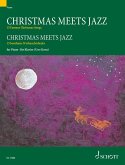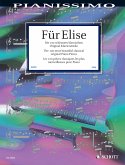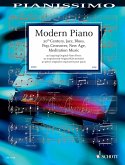This volume contains a wide selection of famous musical themes from Bach to Carl Orff. Some of them were originally written for the piano; most have had their scores carefully arranged to make them easy to play on the piano. Each piece is followed with a jazz interpretation, which can either be played alone or alongside the 'original' version. Perhaps this will show that the 'classics' are not all that far removed from jazz, and that music of earlier periods contains many of the essential characteristics of jazz. Doesn't Lully's 'Gavotte', for instance, contain one of the most famous jazz themes ever? The 'Blue Gavotte' may make this clearer. The theme from Mozart's Sonata in A major (K 331) doesn't require many rhythmic changes to give it a blues flavour ('Mozart Goes Blues'). The driving rhythm of the ostinato bass in Carl Orff's 'O Fortuna' would suit modern jazz-rock performers well, with a few small changes ('A Fortune for a Tune'). What do Bizet's 'Habanera', Brahms' 'Hungarian Dance No. 5' and Paganini's 'Caprice No. 24' have in common? Why have they been turned into salsa music ('Habanera con Cigarro', 'Hungarian Salsa No. 5', 'Capriccio Latino')? Much of this is up to the individual: if you want to discover similarities, they are easy to find.
Dieser Download kann aus rechtlichen Gründen nur mit Rechnungsadresse in A, B, BG, CY, CZ, D, DK, EW, E, FIN, F, GR, H, IRL, I, LT, L, LR, M, NL, PL, P, R, S, SLO, SK ausgeliefert werden.









